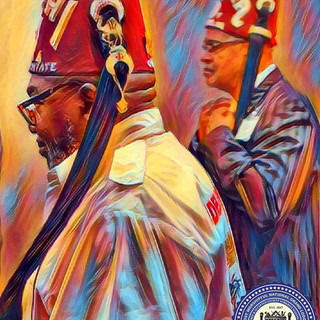
Shriners & the Masonic Connection
- Feb 5, 2023
- 3 min read
Updated: Apr 12, 2023
The Shriners, also known as the Ancient Arabic Order of the Nobles of the Mystic Shrine, is a fraternal organization that was established in the United States in the 19th century. The Shriners are known for their philanthropic work. The National Imperial Council of the Shriners is the governing body that oversees the operations of Shriner organizations and units throughout North America.
They have a set of beliefs and values that guide their actions and decision-making. These beliefs are centered around the principles of brotherhood, charity, and truth. The Shriners believe in the importance of fellowship and support among members, as well as the importance of giving back to the community through their philanthropic efforts. They also hold a strong commitment to truth and honesty, as well as to the principles of the Masonic order, of which the Shriners are a part. While the beliefs of individual Shriners may vary, the overall philosophy of the organization is centered on these core principles.
The fez is a type of hat that is traditionally worn by members of the Shriners. The red fez with a black tassel has become one of the most recognizable symbols of the organization and is often associated with its philanthropic work. The Shriners began wearing the fez in the late 19th century as part of their ceremonial dress, and it has since become a symbol of their commitment to the organization's values and principles. The fez is typically worn at Shriners events and ceremonies, as well as during parades and other public appearances. It is often paired with a Shriners' uniform or formal attire.
To become a Shriner, an individual must first become a Master Mason in a Masonic lodge. After being initiated as a Master Mason, (and receiving the York Rite degrees and the Scottish Rite 32nd degree in Prince Hall Origin Freemasonry) a member can then petition to join a Shriners temple. The petition must be sponsored by two current Shriners and must be approved by the temple's governing body. Once the petition is approved, the candidate must then undergo a series of degrees and initiation rituals to become a full-fledged Shriner.
In addition to being a Master Mason, there may be other requirements to become a Shriner, such as being a certain age, having a good reputation, and being of good character. The specific requirements and initiation rituals can vary between temples, so it is best to contact a local Shriners temple for more information on the specific steps to become a member.
The Shriners have a strong association with the desert and the "desert culture" of the Middle East. The Shriners' original ceremonial dress and regalia were influenced by this cultural imagery. The desert theme is also reflected in the names and themes of many Shriners temples, which often adopt Arabic or Middle Eastern names and imagery. The desert theme is also incorporated into Shriners parades and events, where members may dress in Middle Eastern-style clothing and participate in elaborate processions featuring horses and camels.
While the Shriners' association with the desert may have originated in part as a form of exoticism or romanticism, it has since become an important part of the organization's identity and heritage. The desert theme serves as a reminder of the Shriners' commitment to preserving and celebrating the ideals and traditions of the Masonic order.
The Masonic principles of brotherhood, charity, and truth form the basis of the Shriners' values and beliefs, and the two organizations have a close relationship. Many Shriners are also active members of the Masonic lodges and participate in both organizations. Thus, the relationship between the Masons and the Shriners reflects the close-knit and supportive nature of the Masonic family of organizations.
To Become A Mason, Ask a Mason. Contact us Today at:









Comments